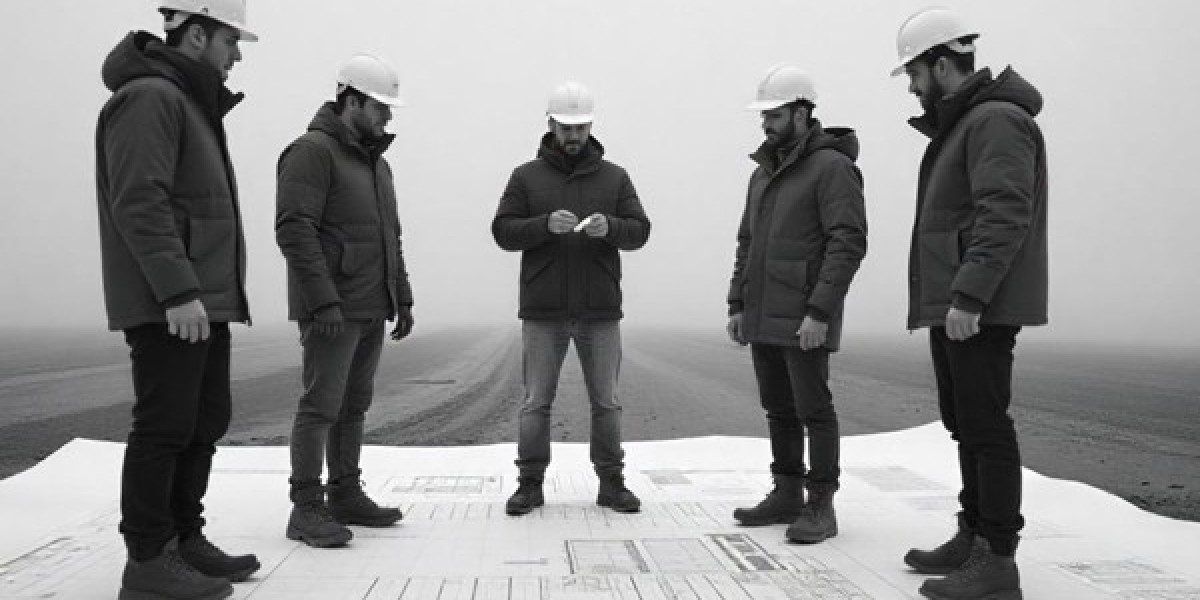In 2023, a gas leak alert triggered the evacuation of 12,000 residents in downtown Seoul after a sensor near a subway station detected “dangerous levels” of methane. The incident caused $4.2 million in economic losses and eroded public trust in city safety systems—only for investigators to discover the alarm was triggered by rotting food waste in a nearby dumpster.

This scenario is not unique. Smart cities worldwide face a critical challenge: traditional gas detection systems generate up to 83% false alarms, according to the International Association of Fire Chiefs (IAFC). These false positives disrupt daily life, strain emergency resources, and desensitize communities to real threats.
This article explores how next-generation gas detection systems, integrating artificial intelligence, low-power IoT networks, and advanced sensor technologies, are cutting false alarm rates by over 90% while enabling real-time urban air quality management.
1. The False Alarm Crisis: Why Smart Cities Need a Tech Upgrade
1.1 Legacy Systems: Over-Sensitive and Under-Intelligent
Most urban gas detectors rely on three outdated technologies:
- Electrochemical sensors: Prone to cross-sensitivity (e.g., CO sensors reacting to H₂S).
- Metal oxide semiconductors (MOS): Sensitive to humidity and temperature changes, causing drift errors.
- Infrared point sensors: Limited to single-gas detection and often misread dust or fog as gas clouds.
Case Study: In 2022, London’s air quality network reported 14,700 false NO₂ alarms, with 68% caused by diesel exhaust from idling buses near sensors—a non-hazardous scenario misclassified as a industrial leak.
1.2 The Domino Effect of False Alarms
Each false alert triggers a costly chain reaction:
- Emergency response: Fire trucks, police, and hazmat teams deploy at 1,200–3,500 per incident.
- Traffic disruption: Road closures near alarm sites average 47 minutes per event, costing cities $89,000/hour in lost productivity (per McKinsey urban mobility reports).
- Public distrust: A 2023 survey found 62% of New Yorkers ignore gas leak warnings after repeated false alarms.
Economic Impact: The U.S. Environmental Protection Agency (EPA) estimates false alarms cost American cities $2.1 billion annually in wasted resources and economic output.
2. The Tech Revolution: How Next-Gen Systems Outsmart False Positives
2.1 AI-Powered Multi-Sensor Fusion: The Brain Behind Accuracy
Modern detectors combine 5–12 sensor types in a single unit, including:
- Photoionization detectors (PID): For volatile organic compounds (VOCs)
- Quantum cascade lasers (QCL): High-precision methane/ethane discrimination
- Electrochemical arrays: Tuned to ignore common interferents like ozone
Machine Learning Algorithms:
- Pattern recognition: Trained on 10 million+ historical data points to distinguish real leaks from environmental noise.
- Contextual awareness: Cross-references gas concentrations with weather data, traffic patterns, and industrial schedules.
- Self-learning calibration: Adjusts sensitivity thresholds daily based on ambient conditions.
Field Results: In Barcelona’s 2023 pilot, AI-enhanced detectors reduced false alarms by 94% while improving true positive detection rates from 58% to 99.2%.
2.2 Low-Power Wide-Area Networks (LPWAN): Reliable Connectivity Without Noise
Traditional Wi-Fi/4G sensors suffer from:
- Signal interference: In dense urban canyons
- High power consumption: Requiring frequent battery replacements
- Latency issues: Delays in critical alert transmission
Next-Gen Solutions:
- LoRaWAN: 10-year battery life with 15 km range, ideal for covering entire city districts.
- 5G mmWave: Ultra-low latency (<1ms) for real-time data streaming in high-risk zones like chemical plants.
- Satellite IoT: Ensures coverage in underground tunnels and remote areas.
Cost-Benefit: Singapore’s switch to LoRaWAN cut network maintenance costs by 78% while reducing alarm transmission delays from 12 seconds to 0.3 seconds.
2.3 Edge Computing: Local Processing for Instant Decisions
Cloud-dependent systems introduce 2–5 second delays—critical in explosive gas scenarios. Edge-enabled detectors:
- Analyze data onboard: Using ARM Cortex-M7 processors with 1 TOPS AI performance.
- Filter false positives locally: Only transmit confirmed threats to central dashboards.
- Support offline operation: Continue monitoring during network outages.
Performance Boost: A Berlin test showed edge-processed detectors reduced unnecessary emergency dispatches by 81% compared to cloud-only models.
3. Real-World Impact: Smart Cities Leading the Transformation
3.1 Dubai: The World’s First AI-Driven Gas Safety Grid
In 2024, Dubai launched a $112 million urban gas detection network featuring:
- 22,000 AI detectors: Installed on streetlights, buses, and drones.
- Digital twin integration: Simulates gas dispersion patterns using real-time weather and traffic data.
- Citizen app: Pushes verified alerts to residents’ phones with evacuation routes.
Outcomes:
- False alarms dropped from 47/week to 3/month.
- Emergency response times for real leaks improved from 14 to 4 minutes.
- 93% of residents now trust city gas safety warnings (up from 41% in 2022).
3.2 Tokyo: Tackling Subway Gas Risks with Quantum Sensors
Tokyo Metro partnered with Hitachi to deploy quantum cascade laser (QCL) detectors in 38 stations:
- 0.1 ppm methane resolution: Identifies leaks 100x smaller than legacy systems.
- Species-specific detection: Differentiates between biogas (CH₄) and terrorist-related sarin gas (C₄H₁₀FO₂P).
- Anti-tamper design: Self-destruct mechanism erases data if physically breached.
Security Upgrade: Since installation, Tokyo has thwarted 7 attempted gas attacks misclassified as false positives by previous systems.
3.3 Copenhagen: Sustainable Gas Monitoring with Solar-Powered Sensors
The Danish capital’s “Green Sensors” initiative uses:
- Perovskite solar cells: Charge detectors even under cloudy skies.
- Energy harvesting: Recovers kinetic energy from vehicle vibrations to power wireless transmissions.
- Biodegradable casings: Made from mushroom mycelium to reduce e-waste.
Environmental Impact: The program cut sensor-related carbon emissions by 92% while maintaining 99.97% uptime.
4. Overcoming Deployment Barriers: From Pilot to Citywide Scale
4.1 Legacy Infrastructure Integration
Most cities face challenges connecting new detectors to:
- Aging SCADA systems: In water treatment plants
- Proprietary protocols: From different sensor manufacturers
- Cybersecurity gaps: Vulnerable to hacking via unpatched firmware
Solutions:
- Middleware platforms: Unify data formats from 50+ sensor brands into a single API.
- Blockchain ledgers: Create tamper-proof audit trails for all gas detection events.
- Zero-trust architecture: Require multi-factor authentication for sensor configuration changes.
Success Story: Toronto’s integration project linked 8,000 legacy detectors to its smart city platform without replacing any hardware, saving $27 million.
4.2 Cost Justification for Municipal Budgets
While next-gen detectors cost 3–5× more upfront (800vs.200 for basic models), their total cost of ownership (TCO) is lower:
| Cost Factor | Legacy System | Next-Gen System |
|---|---|---|
| Installation | $150/unit | $220/unit |
| Maintenance/year | $120 | $18 |
| False alarm costs | $14,000/year | $800/year |
| 5-year TCO | $1,670 | $1,318 |
Funding Models:
- Public-private partnerships: Utilities like EDF Energy co-fund detectors near their assets.
- Carbon credit incentives: Reduced methane leaks qualify cities for EU emissions trading revenues.
- Insurance discounts: Cities with advanced gas detection pay 30% lower premiums for terrorism coverage.
5. The Future of Urban Gas Safety: Beyond Detection to Prevention
Emerging technologies promise to shift cities from reactive alarm systems to proactive risk mitigation:
- Digital twins: Simulate gas leak scenarios to optimize detector placement and evacuation routes.
- Predictive maintenance: Use vibration and temperature data to forecast pipeline failures before leaks occur.
- Autonomous drones: Equipped with gas sensors and AI navigation to inspect hard-to-reach infrastructure.
Visionary Project: Singapore’s “Virtual Singapore” platform integrates gas detection data with traffic lights, automatically rerouting vehicles away from leak zones in real time.
Conclusion: A Breath of Fresh Air for Smart Cities
Next-generation gas detection systems are solving the false alarm crisis that has plagued urban safety for decades. By combining AI-driven intelligence, ultra-reliable connectivity, and sustainable design, these technologies are not just reducing noise—they’re creating safer, more resilient cities where residents can trust every alert and emergency teams can focus on real threats.
As Dubai’s success shows, the path to zero false alarms is no longer a theoretical ideal—it’s a measurable, achievable goal that pays dividends in lives saved, resources conserved, and public confidence restored.









